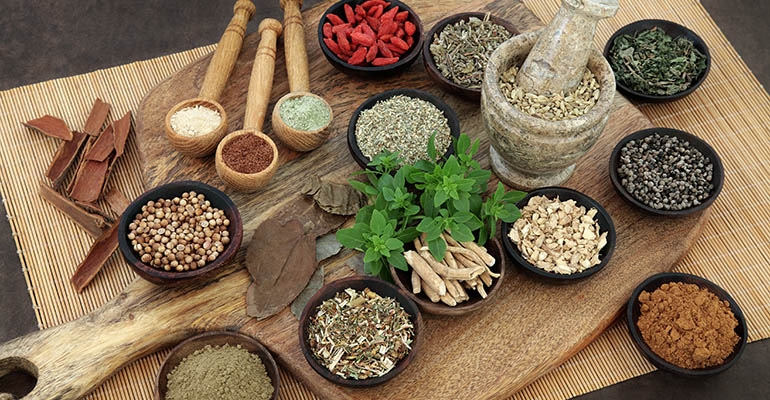Make sure you understand these four integral guidelines before incorporating trendy Āyurvedic language onto your product's label.

From herbal powders to functional additives in food and beverages, āyurvedic herbs such as ashwagandha and turmeric have taken the natural products industry by storm–and with good reason. These ingredients are efficacious, largely side-effect free and there is a growing body of research on them that has also been a major driver of this trend.
So, let’s take a closer look at what it means to be Āyurvedic, things to watch out for and how you can use these principles to improve your products.
Products labeled as Āyurvedic are those that use herbs and formulations from Ayurveda, the oldest medical science in the world that is rooted in India. Ayurveda literally translates to the science of life; it is based on a body of Sanskrit literature that describes in detail how people should care for themselves in order to maximize health and longevity according to health care concerns, bodily constitutions and climate to name a few.
While many products feature āyurvedic herbs in their formulations, using herbs from India alone is not enough to make your product Āyurvedic from the classical perspective. The following four principles should also be followed in order to ensure the highest quality products and responsible manufacturing practices:
1. Sustainable sourcing methods
Overharvesting was as important thousands of years ago as it is today. When using wild-crafted herbs it is critical to maintain healthy populations, and we should source our herbs from companies that follow good, sustainable practices. Herbs like jatamamsi and kutki are under extreme pressure from commercial harvest–Fairwild is a certification program that helps ensure sustainable practices and has a list of certified operators and producers.
2. Harvested at the right time of year for maximum potency
Another feature from the classical texts: Seasonal harvesting plays a critical role in where the energy of the plant is most potent. Look for farmers or manufacturers that follow these principles; for example, harvesting root crops exclusively in the fall.
3. Digestible
You are not what you eat, you are what you digest! If your product causes gas, bloating, burping or other signs of gastric distress, it does not meet Āyurvedic guidelines.
4. No harm to consumers
There is no one-size-fits-all product or formula, and even generally safe herbs such as ashwagandha are contraindicated for certain conditions, such when a person has rheumatoid arthritis, any other conditions of toxic buildup, high pitta levels or runs very hot.
Following the above guidelines not only qualifies your product as Āyurvedic, it makes your product inherently better–for your consumer, for the environment and for the longevity of your brand as a reputable and trustworthy organization.
Sarah Otto-Combs is a NAMA certified Āyurvedic practitioner and CEO of Siddha Labs. She is passionate about sharing the wisdom of Āyurveda in a way that is accessible and informative to all. Please contact her at [email protected] with any questions or comments.
About the Author(s)
You May Also Like




